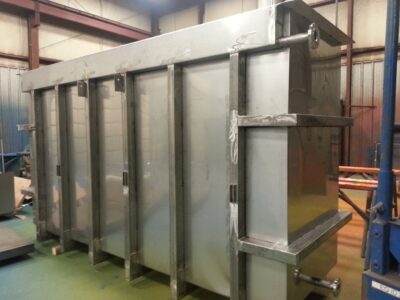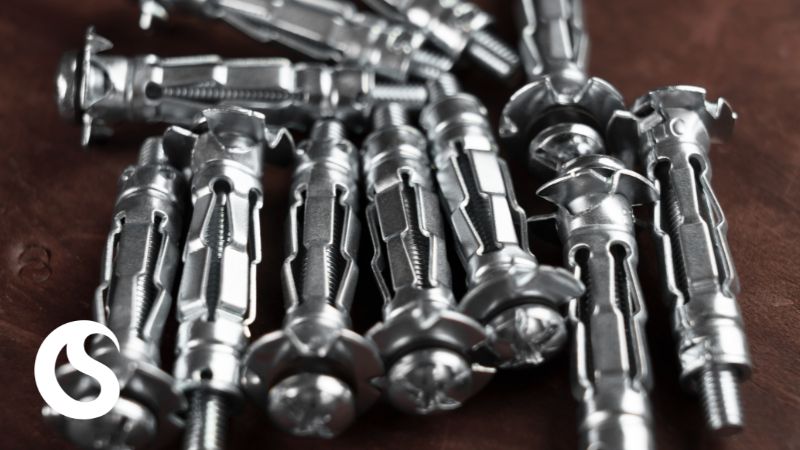Many industries, including the military, electronics, and medical sectors, demand high-quality surface finishing of their parts. When components are delicate, irregularly shaped, or complex, rack plating is an excellent option for surface finishing.
Before investing in a new rack plating system, surface finishing shops should consider the electrical requirements of their specific surface finishing process, the rack frame material, and the material of the rack itself. These factors contribute to the effectiveness and efficiency of the rack plating process.
-
The Amps per Square Foot Requirement of the Surface Finishing Process
Every rack plating process requires a different amps-per-square-foot capability. An amps-per-square-foot requirement can be as low as 10 and as high as 400. The amps-per-square-foot of a rack plating process is limited by the capacity of the rectifier. To accommodate rectifier limitations, surface finishing shops may need to limit the number of parts they load into the rack at one time.
Below are examples of typical amps-per-square-foot requirements for common surface finishing processes. These requirements may vary depending on the specific process.
| Type of Finishing Process | Amps/Square Foot |
| Anodizing – Type 1 | 10–15 |
| Nickel | 25–35 |
| Nickel-Chrome | 100–150 |
| Hard Chrome | 250–400 |
| Electropolishing | 300–400 |
-
The Current Carrying Capacity of the Rack Frame Material
The current carrying capacity of the rack’s frame material ensures parts are plated consistently, with no plating voids, uneven plating, or other quality issues. Copper is the standard against which surface finishing shops compare current carrying capacity.
| Frame Material | Current Carrying Capacity/Square Inch | Percentage of Copper’s Carrying Capacity |
| Copper | 1,000 | – |
| Aluminum | 600 | 60 percent |
| Brass | 250 | 25 percent |
| Phosphor Bronze | 180 | 18 percent |
| Steel | 120 | 12 percent |
| Titanium | 31 | 3.1 percent |
| Stainless Steel | 23 | 2.3 percent |
-
The Strength, Resistance, and Current Carrying Capacity of the Rack Material
The last major consideration when setting up a rack plating process is the material of the rack itself. Racks can be fabricated from several different metals, all of which have advantages or disadvantages depending on the part to be plated. The stronger the rack material, the more parts it may be possible to plate in a single session. Some processes may require acid or caustic resistance.
Below are the most common metals used to fabricate plating racks and their advantages and disadvantages.
| Metal | Advantages | Disadvantages |
| Copper | Current Carrying Capacity; Easy to Fabricate | Poor Acid Resistance; Soft |
| Aluminum | Current Carrying Capacity; Strong; Lightweight; Inexpensive | Poor Caustic Resistance; Difficult to Fabricate |
| Brass | Strong; Easy to Fabricate | Poor Acid Resistance |
| Phosphor Bronze | Current Carrying Capacity | Poor Acid Resistance; Low Availability; Expensive |
| Steel | Strong; Inexpensive | Poor Acid and Caustic Resistance |
Seacole can help surface finishing shops keep their rack plating equipment effective and efficient. Our RACK/Stripper 35 strips tin, solder, and copper from plating racks so they can continue to provide consistent, high-quality plating. The product can hold more than 20 ounces per gallon of metal, making it an economical addition to any surface finishing maintenance routine.
For help understanding your rack plating process or to discover how specialty chemicals can make your process more productive, contact the Seacole team today.





